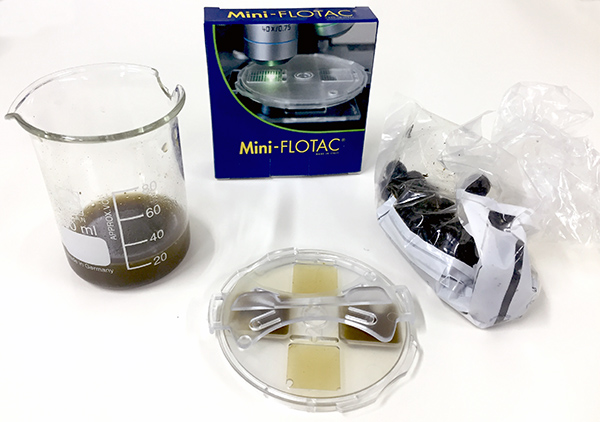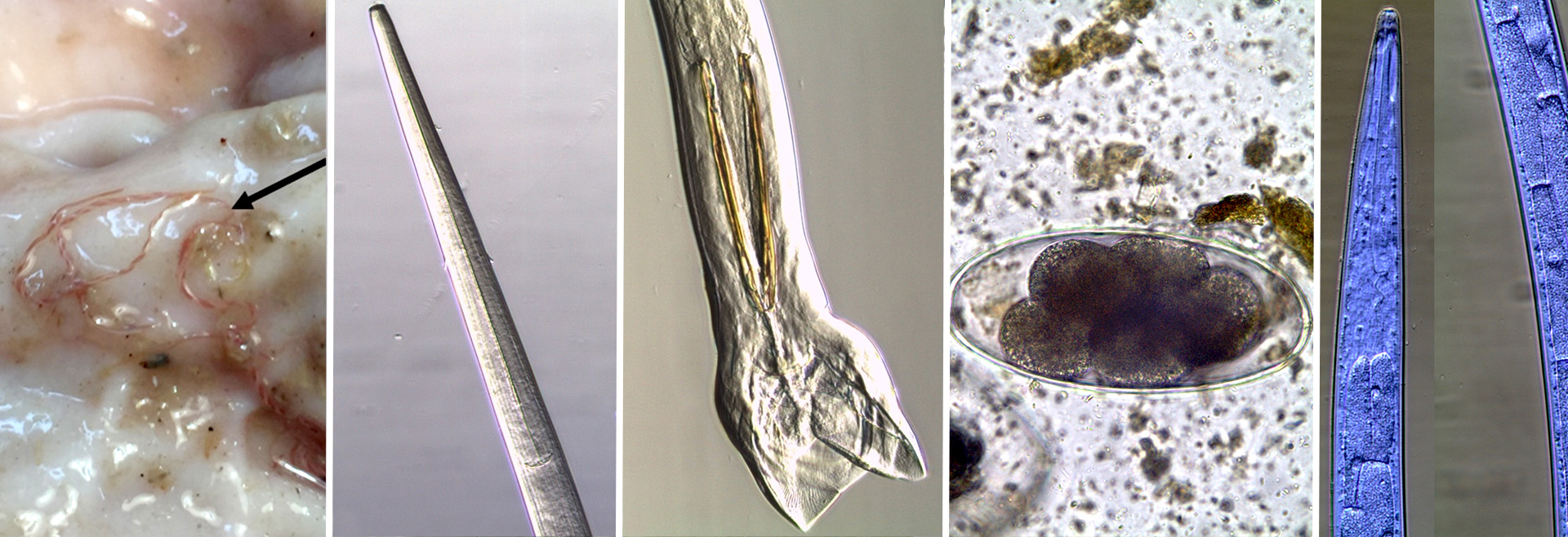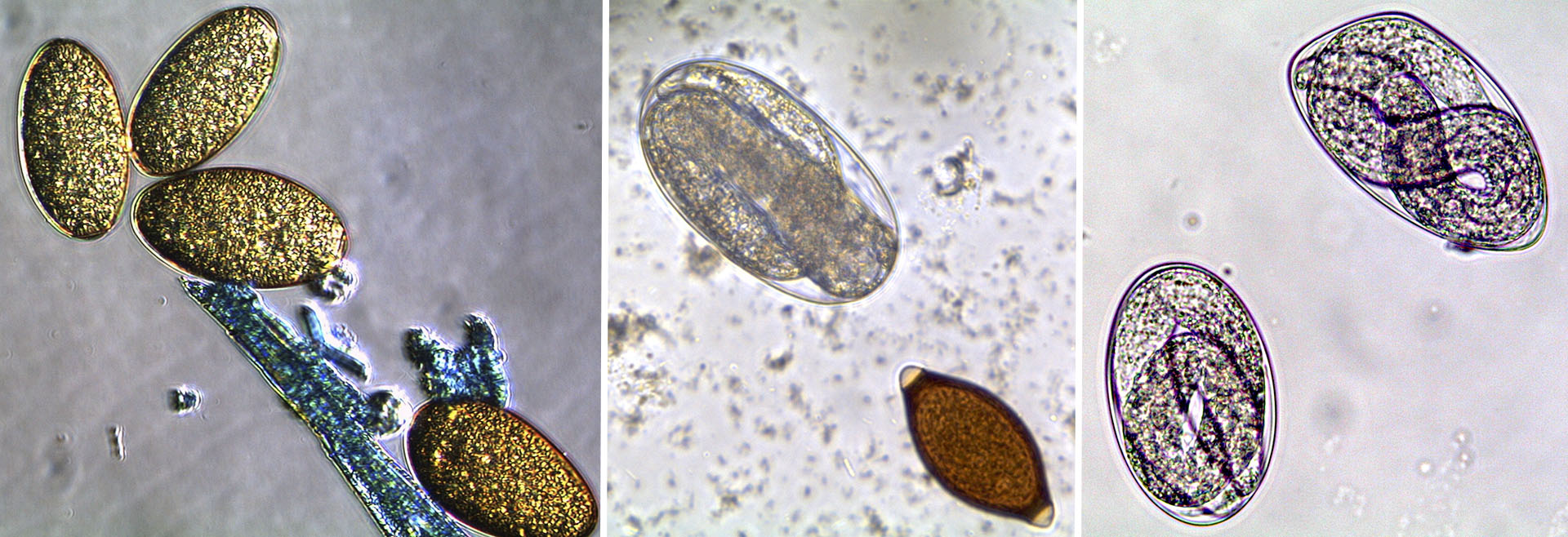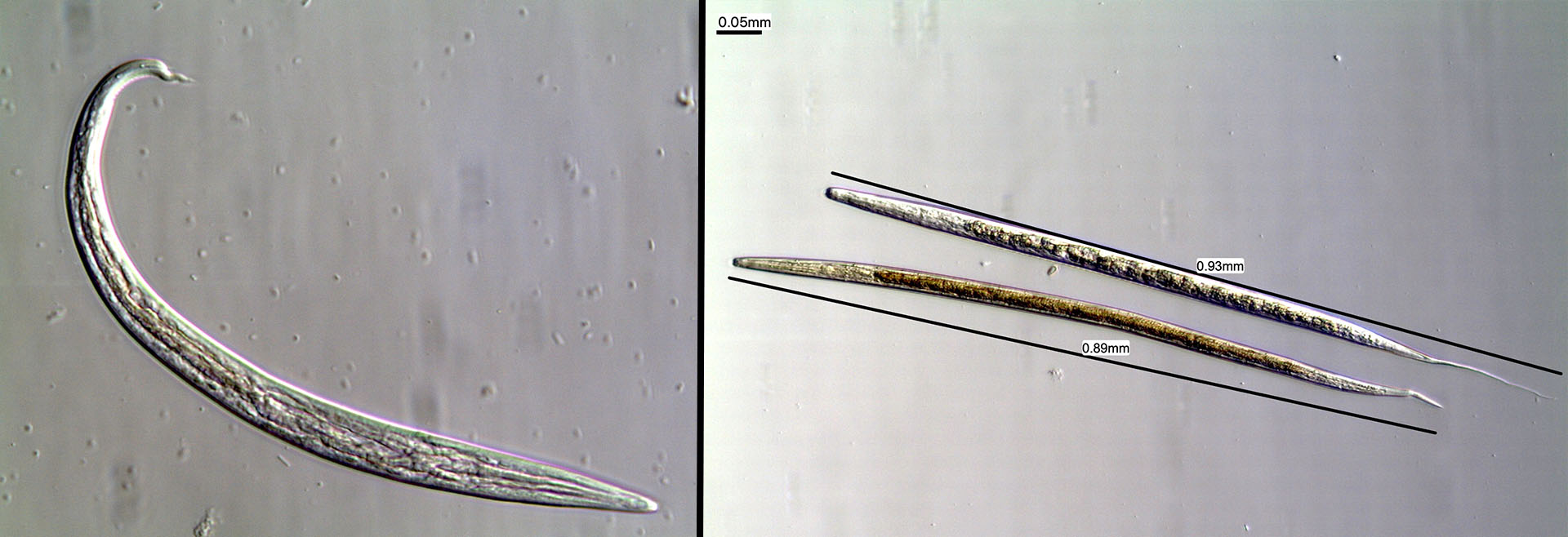Task 2
Sheep may be infected by several nematode, cestode and trematode species. These parasites infect different organs and tissues. The most pathogenic and widespread in Europe include the gastrointestinal parasites Haemonchus contortus and Teladorsagia circumcincta, the lungworm Dictyocaulus filaria and the liver fluke Fasciola hepatica. The diagnosis of internal parasites in faecal samples relies on different coprological methods, which are designed to detect specific life stages of these parasites. FEC is the most commonly used method to measure resistance/susceptibility to internal parasites within and between breeds of sheep. Animals with lower FEC are considered more resistant and substantial evidence shows that this trait is both repeatable and heritable.

This task will encompass standard parasitological procedures, as well as serological and molecular methods, where applicable, to identify parasite species infecting the Merina Branca breed and quantify infections levels. The different methods will comprise: 1) the Baermann technique to detect lungworm larvae 2) sedimentation techniques and serology using commercial ELISA tests for the diagnosis of the liver fluke Fasciola hepatica and 3) the Mini-Flotac® technique to assess infection with gastrointestinal parasites and perform FEC to quantify infection levels. FEC will be used as an indicator trait of resistance. Additionally, faecal samples will be used to prepare coprocultures to allow the recovery and morphological identification of third stage larvae (L3). Gastrointestinal nematode eggs and larvae will be purified and submitted to DNA extraction and the parasite species confirmed by PCR using published primers. Parasitological, serological and molecular procedures will be performed at the parasitology laboratory, INIAV.
Institutions involved and members of the research team in this task:
INIAV
- Helga Waap
- Jacinto Gomes
- Ana Cristina Ferreira
- Pedro Vieira (aluno de MIMV)
- Ana Júlia Afonso
Università degli Studi di Napoli Federico II
- Prof. Dr. Laura Rinaldi
(Department of Veterinary Medicine and Animal Production)
Expected outputs:
- Identification of parasite species infecting different organic systems (respiratory, digestive and hepatic) of lambs
- Ranking of animals according to FEC results (phenotypic marker of resistance)
- Obtaining DNA from larvae/parasite eggs to determine anthelmintic resistance of parasites by pyrosquencing in subsequent tasks.


































